39 thermal energy and heat worksheet
Object Identifier System This is the web site of the International DOI Foundation (IDF), a not-for-profit membership organization that is the governance and management body for the federation of Registration Agencies providing Digital Object Identifier (DOI) services and registration, and is the registration authority for the ISO standard (ISO 26324) for the DOI system. en.wikipedia.org › wiki › GasGas - Wikipedia Once their internal energy is above zero-point energy, meaning their kinetic energy (also known as thermal energy) is non-zero, the gas particles will begin to move around the container. As the box is further heated (as more energy is added), the individual particles increase their average speed as the system's total internal energy increases.
› 5th-grade-science-worksheetsTypes Of Energy - Middle School Science - Grade 5 - eTutorWorld 2. Heat Energy-Also known as thermal energy, it is produced from heated up substances. We know that matter is made up of atoms that move within it. When the substance is heated, the increase in temperature causes these particles to move faster and release energy in the form of heat.

Thermal energy and heat worksheet
› lessons › viewWhat Is Energy? - Lesson - TeachEngineering Sep 14, 2005 · thermal energy: Heat energy produced when the molecules of a substance vibrate. The more heat a substance has, the more rapid the vibration of its molecules. Heat energy flows from places of higher temperature to places of lower temperature. Assessment Pre-Lesson Assessment. Discussion: Ask students the following questions: What is energy? › lessons › viewRenewable Energy - Lesson - TeachEngineering Jan 28, 2021 · Sound energy is created, for example, when a door slams, it releases sound energy. Solar energy occurs from the sun (light). Refer to the associated activity Solar Power for students to explore this energy form. Thermal energy (or heat) boils water, keeps us warm and drives engines. Tidal energy is when the energy from ocean tides is harnessed. › learn › natural-scienceHeat Transfer: Conduction, Convection, Radiation - Wisc ... As a form of energy heat has the unit joule (J) in the International System of Units (SI). However, in many applied fields in engineering the British thermal unit (BTU) and the calorie are often used. The standard unit for the rate of heat transferred is the watt (W), defined as joules per second. Heat - Wikipedia, the free encyclopedia
Thermal energy and heat worksheet. portfoliomanager.energystar.gov › pm › dataENERGY STAR Portfolio Manager Portfolio Manager: What data is ... Energy/Power Station applies to buildings containing machinery and/or associated equipment for generating electricity or district heat (steam, hot water, or chilled water) from a raw fuel, including fossil fuel power plants, traditional district heat power plants, combined heat and power plants, nuclear reactors, hydroelectric dams, or ... › learn › natural-scienceHeat Transfer: Conduction, Convection, Radiation - Wisc ... As a form of energy heat has the unit joule (J) in the International System of Units (SI). However, in many applied fields in engineering the British thermal unit (BTU) and the calorie are often used. The standard unit for the rate of heat transferred is the watt (W), defined as joules per second. Heat - Wikipedia, the free encyclopedia › lessons › viewRenewable Energy - Lesson - TeachEngineering Jan 28, 2021 · Sound energy is created, for example, when a door slams, it releases sound energy. Solar energy occurs from the sun (light). Refer to the associated activity Solar Power for students to explore this energy form. Thermal energy (or heat) boils water, keeps us warm and drives engines. Tidal energy is when the energy from ocean tides is harnessed. › lessons › viewWhat Is Energy? - Lesson - TeachEngineering Sep 14, 2005 · thermal energy: Heat energy produced when the molecules of a substance vibrate. The more heat a substance has, the more rapid the vibration of its molecules. Heat energy flows from places of higher temperature to places of lower temperature. Assessment Pre-Lesson Assessment. Discussion: Ask students the following questions: What is energy?



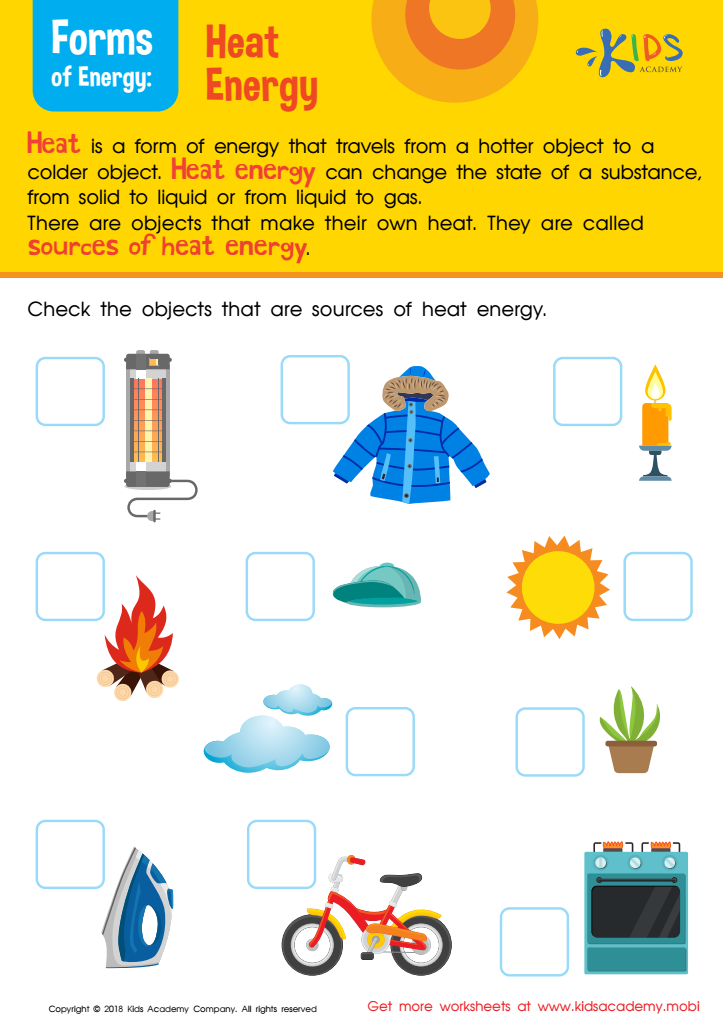


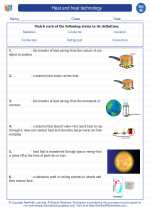
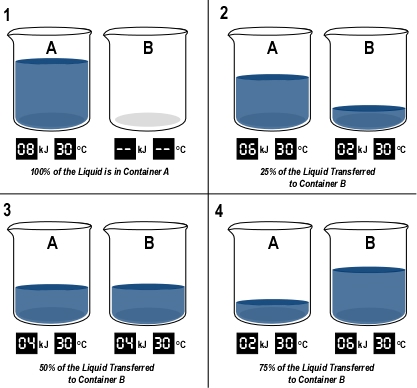
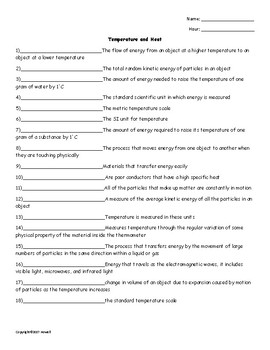




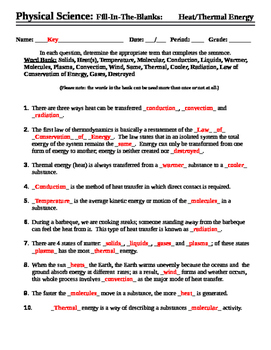

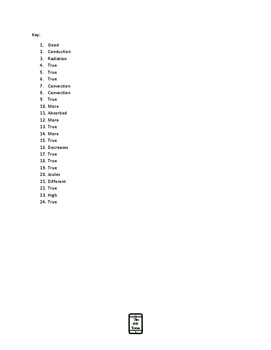






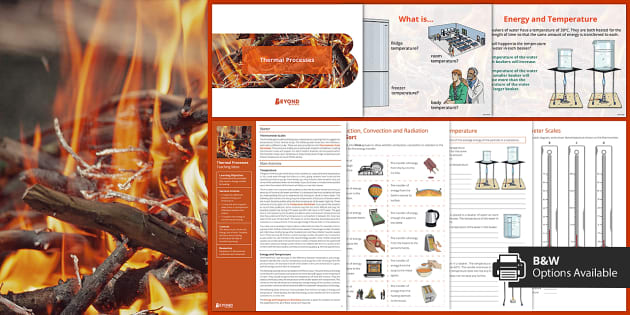




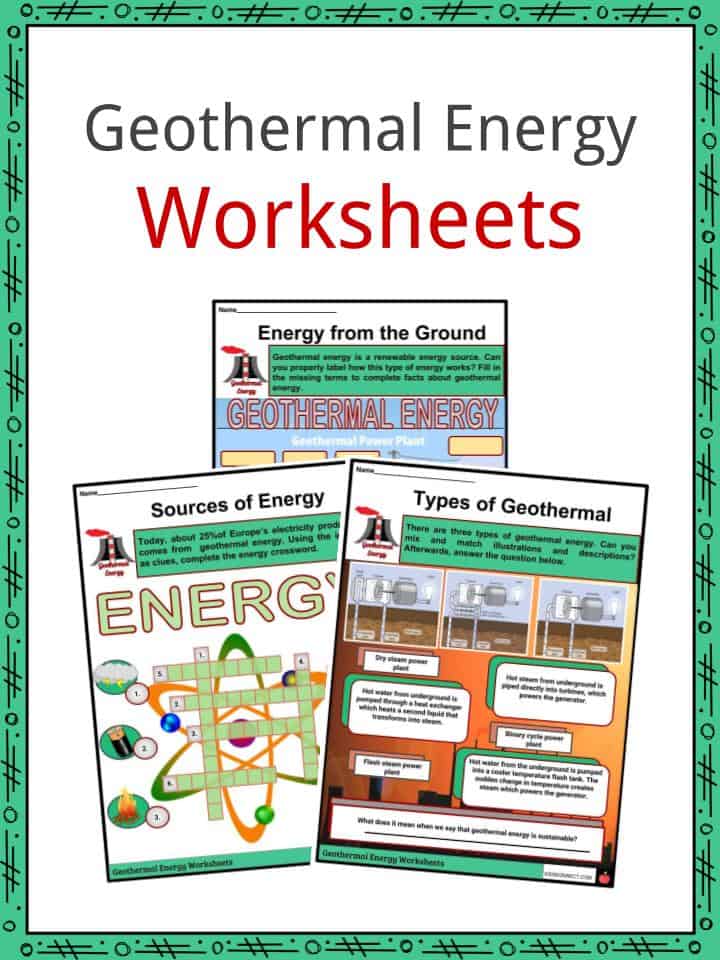




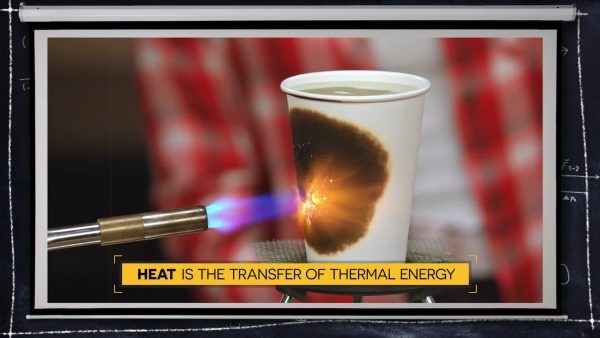
0 Response to "39 thermal energy and heat worksheet"
Post a Comment